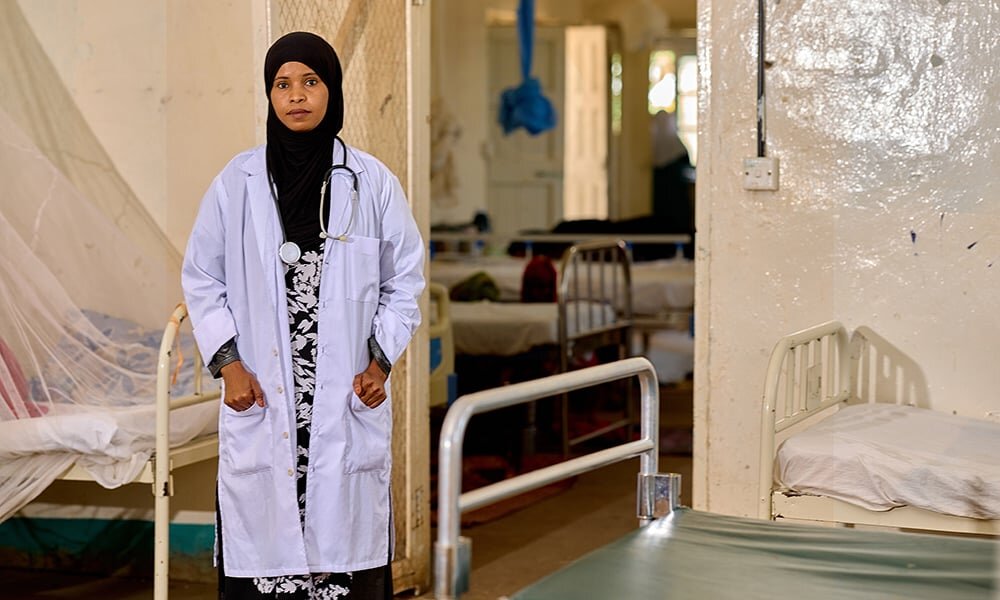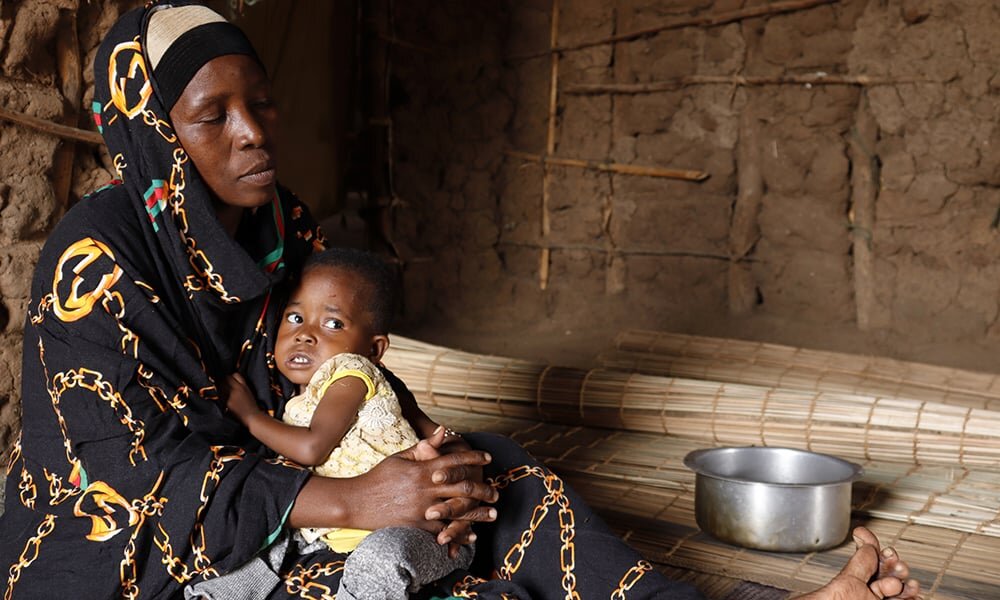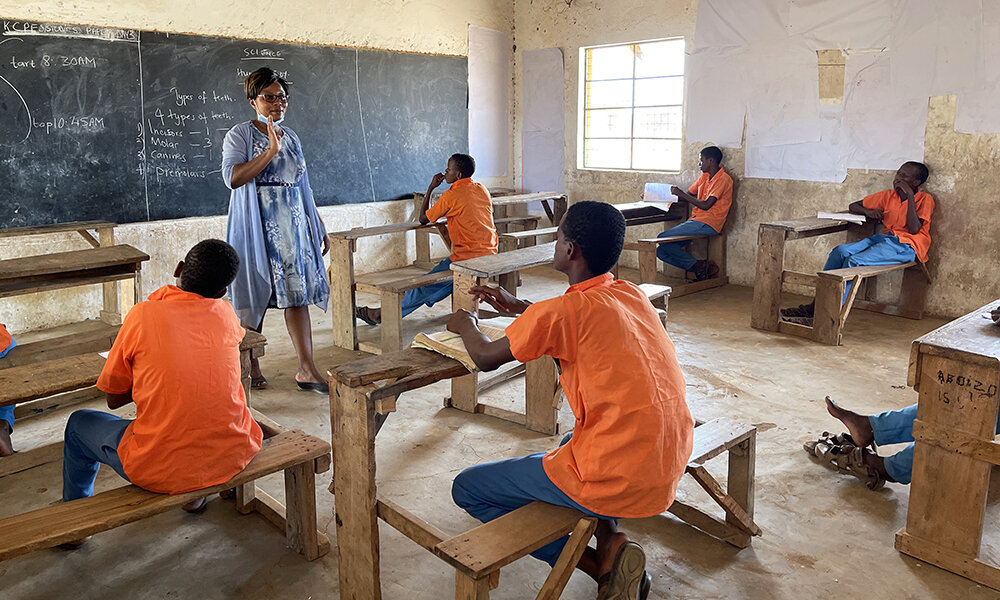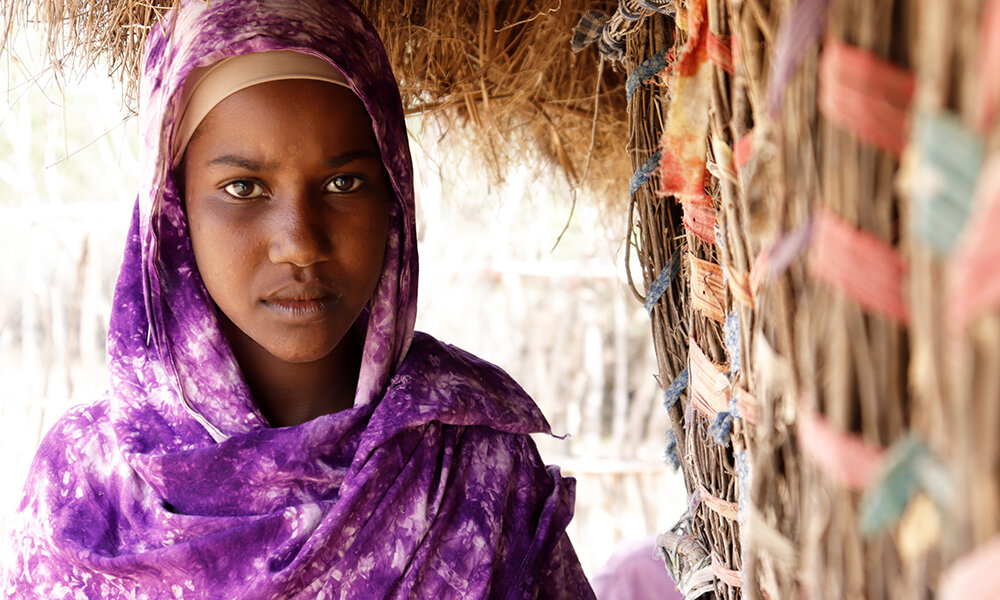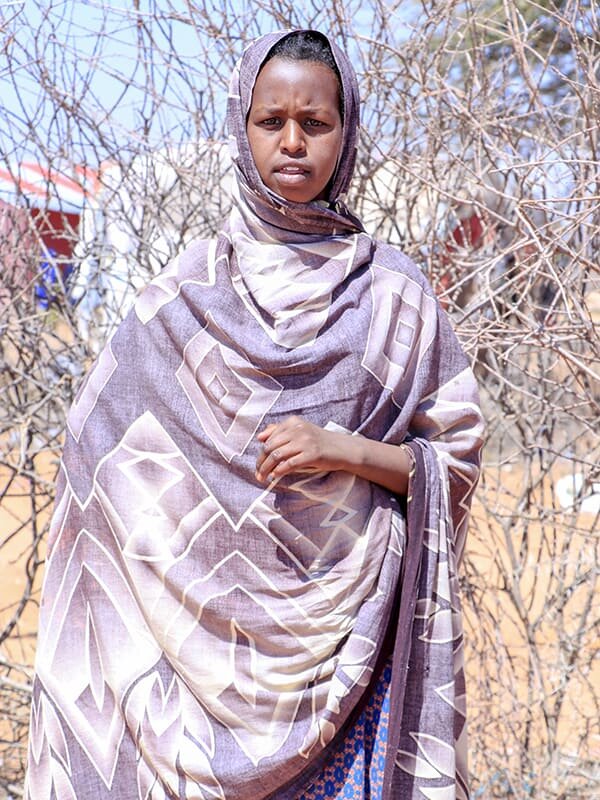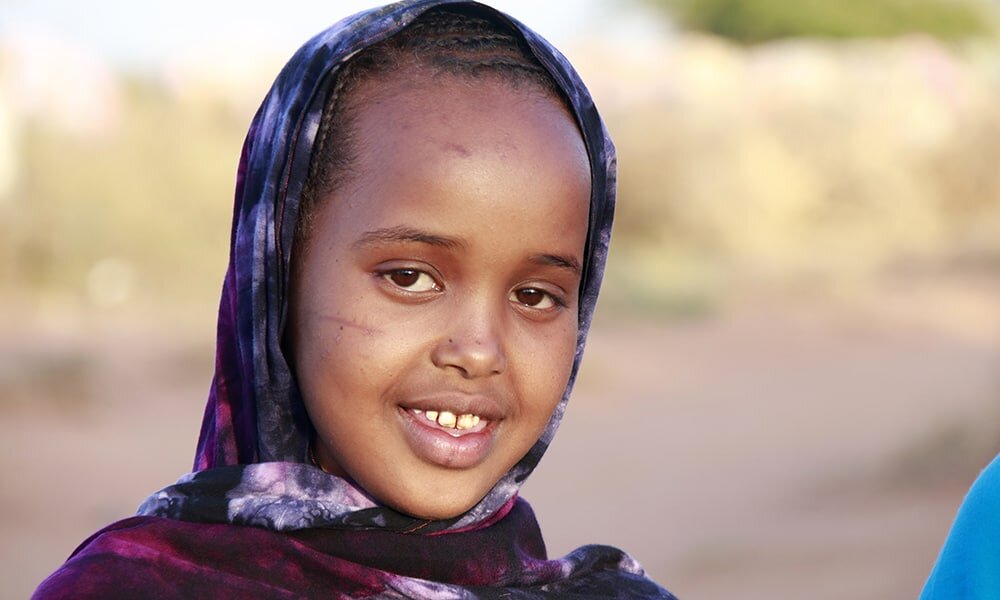By Kerri Whelan | Plan Writer
A 23-year-old pediatric nurse named Hamda stands between two rows of chipped white metal bed frames at a malnutrition clinic in Somalia. Here, finding a moment away from the busyness, she tells Plan staff how the uptick in child patients over the past six months is affecting her job, and her life.
“When I’m at work, I sometimes get emotional,” Hamda says. “I bring food to one or two mothers, but then others ask me too, and when it reaches about five or six, I can’t help them all … I end up not eating because I can’t find the urge to eat … I want people outside of Somalia to know how [the hunger crisis] has impacted us.
The worst drought to hit the Horn of Africa in 40 years is painting a grim scene: Dried up wells, wilted crops and cattle dying by the thousands. In a resource-abundant region that should be boasting with life, this drought — and the hunger crisis it’s created — are plaguing communities.
Children, especially girls, are paying the highest price.
The number of children facing severe acute malnutrition in Ethiopia, Kenya and Somalia has increased more than 15% from January to June, according to the United Nations. And with the combination of the drought, the pandemic and the war in Ukraine, the U.N. predicts a serious increase in death among children, unless we see more humanitarian support to these countries.
One mother of six in Kenya named Safina says her 18-month-old daughter is severely malnourished. And although she has her daughter on a doctor-prescribed feeding plan, it’s difficult to keep her healthy — her other children take the prescribed baby food too, since there’s nothing else to eat.
“We are getting numerous cases of children whose condition is not improving,” a health worker in Kenya says. “When their mothers receive the therapeutic food, they share it with other members of their households … because they have no other food at home, they share it out.”
In Ethiopia, a 25-year-old mother named Leki says her family has lost more than a dozen cows due to the drought, pushing her children to the brink of starvation.
“Our cattle are essential to our survival,” Leki says. “We tried everything we could to save them, but the drought this year was so severe that all 13 of them died. We don’t have anything right now. We try to keep our family alive by gathering firewood and relying on the kindness of people.”
“It is shocking to see the number of livestock that have died — people are in a state of shock, which has affected their mental well-being” a staff member from Plan International Ethiopia says. “The key needs here are food, livestock and animal feed, as well as water and support for their mental health.”
Huse, another mother in Ethiopia, echoes the importance of livestock for families’ survival. “There isn’t any water around us right now,” Huse says. “Without our cattle, life does not exist … we are severely traumatized. We are only able to survive because of relief aid.”
Across drought-affected areas like Ethiopia, school attendance rates are plummeting, and many children are dropping out altogether. “Four of my children are enrolled in school,” Huse says. “They attend school, but I can’t say they fully understand the lessons they are taught because they don’t eat breakfast or lunch.”
A head teacher in Kenya says she’s witnessing the devastating effects the drought is especially having on girls’ education. Most often, it’s girls who are forced to quit school to stay home and help their families survive this crisis.
“I have a class with not one single girl,” she says. “These girls are either married or at home … they drop out of school so that they can keep up with their chores.”
What kinds of chores are girls tasked with that keep them out of school? For 12-year-old Nasra in Kenya, household duties include waking up at 4 a.m. to sweep the yard, washing the dishes, then setting off on the journey to fetch water from the Tana River. It’s a seven-mile walk to water, one way.
Nasra tells us that the journey back is worse because she has to carry the large barrel of water under the scorching sun. And making it back in time for school — the one place she’s guaranteed a meal — doesn’t always happen.
“When I’m in school, I can barely concentrate because I am so tired and hungry,” Nasra says. “In school, we are given porridge at 10 o’clock, and rice and beans at lunch time. This is the only meal I will eat until the next day. There’s nothing to eat at home, so we just have black tea for dinner.”
When Nasra and other girls in her community have to walk miles without having eaten to collect water, they’re also put at serious risk of sexual violence. Girls in Kenya who are as young as 11 or 12 are being exploited by men in exchange for water, food or money.
And even for girls who have some food or water at home, they always eat less — and last. In Somali culture, whenever there is a food shortage, girls are the last members of the family to eat and often miss meals to feed others.
“I cook, eat last and if there is not enough food, I don’t eat,” 13-year-old Faisa from Somalia says. “I have to wait until the next meal if I am lucky.”
Plan USA is responding to the hunger crisis in central and east African countries, providing lifesaving relief for children and families like food and water kits, school meals and treatment for malnutrition.
Together, we can keep hope alive for girls and their communities. “I dream to see my community have a better life,” 11-year-old Najma from Somalia says. “I would like to ask everyone to help.”
Project reports on GlobalGiving are posted directly to globalgiving.org by Project Leaders as they are completed, generally every 3-4 months. To protect the integrity of these documents, GlobalGiving does not alter them; therefore you may find some language or formatting issues.
If you donate to this project or have donated to this project, you can recieve an email when this project posts a report. You can also subscribe for reports without donating.
